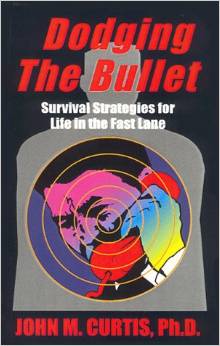When 72-year-old President Donald Trump walked out Feb. 28 with his second summit In Hanoi, Vietnam with 35-year-old North Korean dictator Kim Jong-un, he thought he was exercising the “Art of Deal,” his 1987 best-selling book. One thing Trump forgot is that international diplomacy, especially with temperamental dictators, happens few-and-far-between, looking to get something rather than walk away with nothing. Trump expected Kim would follow up on his “promise” in the first Summit in Singapore, Malaysia June 12, 2018 to “de-nuclearize” the Korean Peninsula. Kim’s idea of “de-nuclearization” is light years apart from the U.S. notion of sending in U.N. nuclear weapons inspector to dismantle Kim’s arsenal of nukes and Intercontinental Ballistic Missiles [ICBMs]. Trump had lofty goals for the first-and-second summits and wound up getting few results.
At stake in the nuclear standoff with North Korea is creating, by whatever means necessary, a safer Korean Peninsula, and, more importantly,the world. When Trump and Kim traded barbs in 2017, threatening nuclear war, the world was less safe, prompting 64-year-old German Chancellor Angela Merkel to mediate the dispute. While Merkel’s offer never panned out, nor was it needed, Trump broke tensions with North Korea in Singapore, getting Kim to stop testing nukes and shooting mid-range nuclear missiles over Japan. Trump and Kim left the summit shaking hands, communicating face-to-face, and, by all accounts, actually liked each other, despite the nearly 40-year age difference. Kim asked Trump to consider sanctions relief as a gesture needed to begin the process of discussing what to do with Kim’s nukes and ballistic missile arsenal. Faced with a third summit, Trump can’t make the same mistakes.
When it comes to Trump demanding that Kim allow U.N. weapons inspectors to dismantle his nuke and ballistic missiles, it’s a total non-starter. Trump must look for easier goals at the next summit, not making demands but coming up with a mutually acceptable compromise. Given Kim possesses around 60 nukes and unknown number of ICBMs, Trump needs to find bridging proposals to protect U.S. national security. To protect U.S. national security, Trump needs to sign a peace treaty with North Korea first, before any discussion of dismantling nukes and ballistic missiles. In exchange for a peace treaty finally ending the 1953 Korean War, Trump should offer sanctions relief, giving Kim an opportunity to build on new diplomatic relations. North Korea and the U.S. should commit to opening up embassies in Pyongyang and Washington before dealing with nuke issue.
Getting a peace treaty first offers the best hope of reducing whatever danger remains with Kim’s nuclear arsenal. As long as the U.S. and North Korea are at peace, there’s really no direct risk of a nuclear accident. “It is essential for the U.S. to quit its current calculation method and approach us with a new one,” Kim said in a speech to the Supreme People’s Assembly, telling Trump to go a different direction in the next summit. There’s zero need for Trump to demand de-nuke or nothing to North Korea, especially knowing that a peace treaty would dramatically reduces the risk of nuclear war. “I look forward to the day, which could be soon, when Nuclear Weapons and sanctions can be removed, and then watching North Korea become on the most successful nations in the world!” Trump said. Trump had the exact same approach in Singapore and Hanoi and it went nowhere.
Demanding nuclear disarmament as a precondition for the next summit won’t go anywhere, regardless of all the sanctions on North Korea. Kim’s looking for some concessions on sanctions to begin discussing the conditions under which Pyongyang would consider disarming. Kim gave Trump the blueprint for peace in his speech to the Supreme People’s Assembly, noting “aroused a strong question if we were right in taking steps with strategic decisions and bold resolution, and evoked vigilance as to the U.S.’s true willingness to improve relations with the DPRK.” While Kim’s statement requires interpretation, he’s essentially asking Trump to take some confidence-building measures, like signing a peace treaty before discussing dismantling Kim’s nuclear arsenal. Kim told the Supreme People’s Assembly that he wanted a new approach to U.S.-DPRK diplomacy.
Trump’s past attempt to impose unilateral disarmament on Kim hasn’t worked, nor will it work in the future. Secretary of State Mike Pompeo must pivot to work immediately on a peace treaty before any attempt to seek disarmament. “We will wait for a bold decision from the U.S. with patience till the end of this year but I think it will definitely be difficult to get such a good opportunity as the previous summit,” Kim said. Getting Kim to sign a peace treaty does more than dismantle Kim’s nuclear weapons. It creates the good will needed to start a reciprocal process, offering Kim sanctions relief and foreign aid to begin improving the DPRK’s economy, now struggling under the burden of poverty, starvation and low expectations. Kim wants reconciliation with South Korea to build “a new history of the nation, peaceful and co-prosperous,” looking to the U.S. to sign a peace treaty before anything else.



